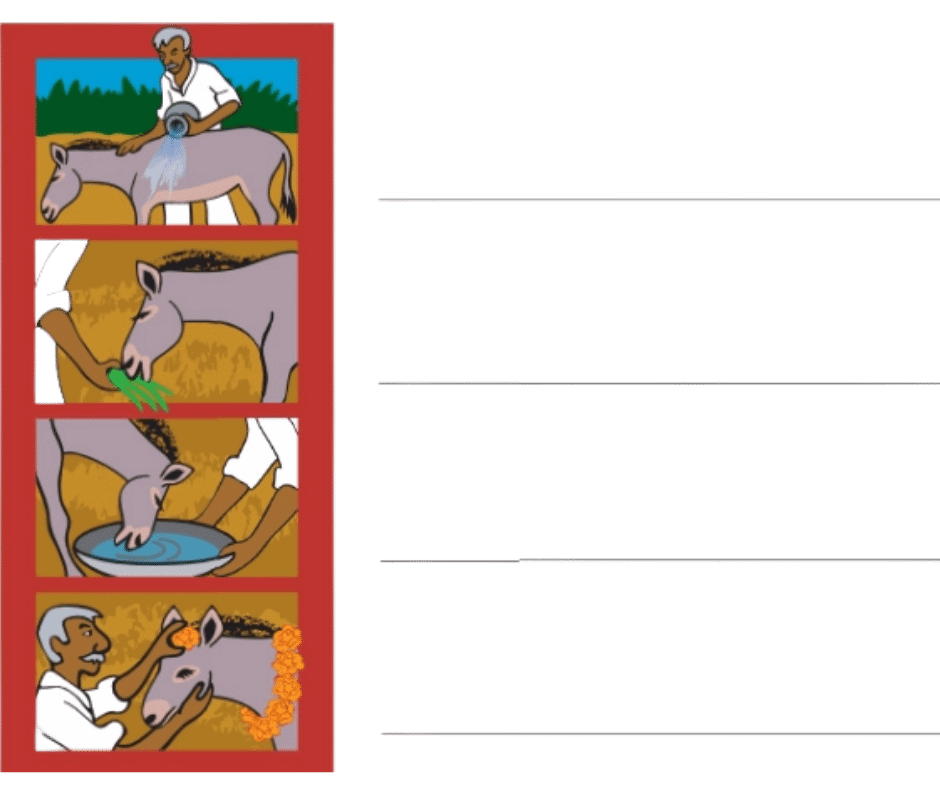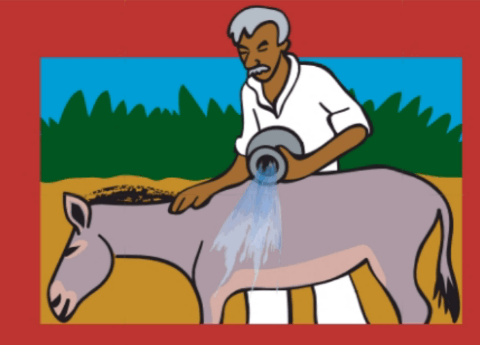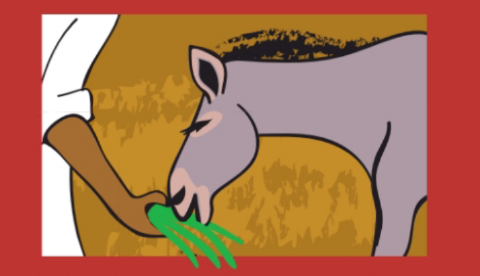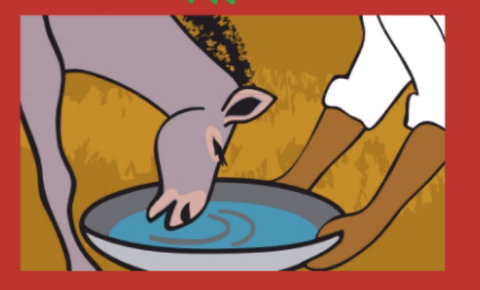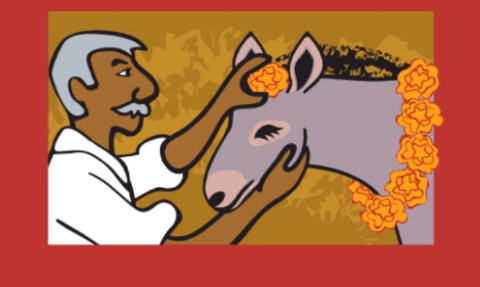Evs Class 3 Chapter 19 Questions and Answers - Free PDF Download
FAQs on NCERT Solutions For Class 3 Evs Chapter 19 Our Friends Animals - 2025-26
1. How should a student answer the question about what Chandu dhobi does for his donkey in NCERT Class 3 EVS Chapter 19?
To answer this question correctly as per the NCERT solutions, you should list the specific actions Chandu takes to care for his donkey. A good answer would include these points:
- Chandu bathes his donkey.
- He feeds it fresh grass to eat.
- He gives it water to drink so it does not get thirsty.
- He shows affection by decorating it with a garland of flowers.
This shows that Chandu treats his animal friend with love and care.
2. What is the correct way to explain what happened to the bird in the story from 'Our Friends Animals'?
Based on the NCERT textbook, the correct way to narrate the incident is in a clear sequence. The bird was hurt by the ceiling fan and fell down. The children, Kalyani, Navjot, and Ali, felt compassionate and helped it. They gently picked it up, offered it water in a bowl, and comforted it. Once the bird felt better, it flapped its wings and flew away, showing its recovery.
3. What is the main lesson from Class 3 EVS Chapter 19, 'Our Friends Animals', according to the NCERT syllabus?
The main lesson from Chapter 19, 'Our Friends Animals', is that all living beings, including animals, deserve our kindness and care. The chapter teaches students that animals experience pain and happiness just like humans. By solving the NCERT questions, students learn the importance of empathy and their responsibility to help and protect the animals around them.
4. How can you solve the exercise asking to list animals you can and cannot touch?
To solve this NCERT exercise, you should create two clear lists. First, list the animals you have not touched but are generally safe to touch, such as domestic or farm animals like rabbits, horses, and cows. Second, list the animals you cannot touch, which are typically wild animals like lions, tigers, snakes, and crocodiles, as they can be dangerous.
5. How do you correctly answer the question about what things are needed by both animals and humans?
For this question in Chapter 19, the correct solution is to list the fundamental necessities for survival that are common to both humans and animals. According to the NCERT curriculum, these basic needs are air to breathe, water to drink, and food to eat. Sunlight is also essential for life on Earth.
6. Why is it important to answer questions from Chapter 19 step-by-step?
Answering questions in a step-by-step manner helps you structure your thoughts clearly, especially for a storytelling chapter like 'Our Friends Animals'. It ensures you don't miss any key details from the textbook narrative, like how the children helped the bird or how Chandu cared for his donkey. This method helps in forming a complete answer and scoring better marks as per the CBSE evaluation pattern.
7. How do the NCERT solutions for 'Our Friends Animals' help us understand our responsibilities?
The NCERT solutions guide students to think beyond just reading the story. By answering questions about caring for animals, students reflect on real-life situations. This process helps internalise the chapter's core message: we have a responsibility to be compassionate and helpful towards animals, which are an important part of our environment.
8. In the NCERT exercises for Chapter 19, why are we asked to think about animals we have not touched?
This exercise is designed to teach a crucial safety and environmental concept. It helps a child differentiate between tame animals, which can be approached with care, and wild animals, which should be observed from a safe distance. The purpose is to build respect for all creatures while also understanding the importance of personal safety.
9. Where can students find accurate NCERT Solutions for Class 3 EVS Chapter 19 for the 2025-26 academic year?
For the 2025-26 session, students can find clear and accurate NCERT Solutions on trusted educational platforms like Vedantu. These solutions are prepared by subject matter experts and are fully aligned with the latest CBSE syllabus. They provide step-by-step answers to all the questions in the 'Our Friends Animals' chapter, helping students learn the concepts correctly.
















